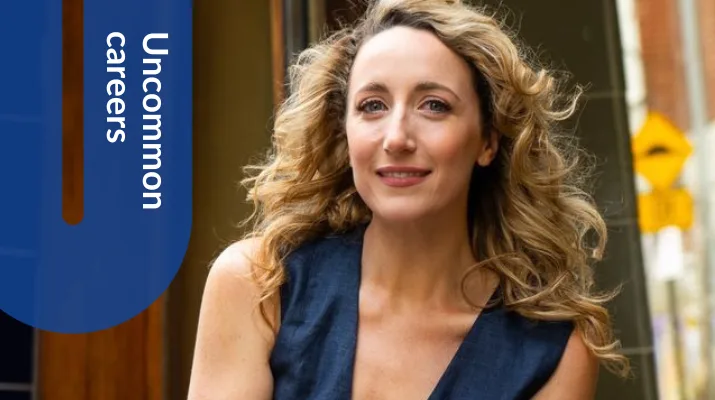How to be sustainable (and budget friendly) at home
By Open Universities Australia
We chatted to Nick Scott, sustainability educator at CERES, about making practical changes in your everyday life, as well as to your home.
Small changes, big positive impacts on the environment… and your wallet
If you’ve already cut down on takeaway to avoid single-use packaging, sworn off fast fashion and carry your own coffee cup everywhere, keep fighting the good fight.
To level up your sustainability game at home, we enlisted Nick Scott from the CERES School of Nature and Climate for tips. And whether you’re a renter or owner, these are all simple actions you can take.
Tip 1: Switch to GreenPower-accredited electricity
Unless you live completely off-grid, you’re already paying for electricity. So why not exchange your hard-earned dollar for electricity that’s generated in a renewable manner?
“Not everyone can afford solar panels or batteries,” says Nick, “but everyone can buy GreenPower electricity…it’s been available for more than 20 years. You may even save money on your bill.”
A GreenPower accreditation means that the electricity you’re buying is certified renewable and that you’re funding renewable energy generators in Australia. Your current provider may even offer a GreenPower-accredited option—shop around here.
You could also consult this Green Electricity Guide, which rates providers and shows you which ones are available in your state.
Tip 2: Keep your air-conditioner at 25°C. For every degree lower, you’re using 10% more energy
“So, if you set your temperature to 20°C, it’s going to use roughly 50 percent more energy,” according to Nick. That’s a painful dent in the wallet.
The same rule applies to winter heating. “In Melbourne, our comfort zone is between 18°C and 25°C. So, setting the thermostat to 18°C is reasonable. If you’re not warm enough, put more clothing on. At 23°C, you’re again using 50 percent more energy!”
Tip 3: Review your kitchen habits
Australia is one of the biggest food wasters in the world.
“Any food waste that goes to landfill produces methane, which, as a greenhouse gas, is 80 times more potent than carbon dioxide when it hits the atmosphere,” says Nick.
There are a couple of easy fixes. “If you live in a council that offers green waste bins, use them! If you don’t, compost or keep a simple worm farm.”
Another thing you can do is eat less red meat. According to the World Economic Forum, it takes around 15,415 litres of water to produce a single kilogram of beef. In comparison, it only takes 4,325 litres of water to produce one kilo of chicken and 322 litres for vegetables.
Since Australians live on the driest continent in the world and are entering an El Niño period, we should be trying to conserve water.
“During the millennium drought, Melbourne’s dams were dangerously down to 26 percent of capacity, but we’ve forgotten about that because we’ve had such good rain over the last ten years,” states Nick.
Tip 4: Try not to buy
“If we could share more stuff and have more tool libraries, we’d save a huge amount of resources,” says Nick.
Which makes perfect sense, because, honestly, how often does your pressure washer actually get pulled out of the shed?
“And when you think about the effort (and dangerous conditions) that come with mining rare minerals, it seems crazy to get rid of your mobile phone after just a year.”
Tip 5: But if you do buy, choose carefully
“Instead of buying that new car every five years, get an e-bike,” advises Nick. “Not only is it much gentler on the environment, it’s good for your health.”
A few things to look out for when you're shopping—how open is the brand about sharing information on its sourcing, manufacturing and supply chain practices? Does it have sustainability certifications like B-Corp or Fair Trade? What kind of materials does the brand actually use? Are its products designed with longevity in mind, so that they can be repaired, reused or recycled?
What should I consider if I am building or renovating a home?
Now that we’ve discussed being sustainable in the home, what about building sustainable homes?
“Just two days ago, I was teaching a group of grade 5s or 6s. I got them to draw the future. A number of kids drew mansions. So, we had a discussion on how big mansions are the wrong way to go. They’re so unnecessary, consume so many resources and put the people living in them in so much more financial stress,” says Nick.
He’s also a co-founder of CERES Home Sustainability Advisory Services (the service is temporarily on hiatus).
“We’d go out to people’s homes and tailor a complete set of recommendations to be made over a five- or ten-year period according to whatever finances they have.”
As before, he emphasises that sustainable need not be more expensive.
When constructing a building, you need to consider three main things.
1. Are you using sustainable materials?
“A lot of energy is required to produce a building. So, what you want to do is source materials that are local and sustainable,” Nick says.
And that could be using farm-grown Victorian timber (versus wood from old-growth forests), or using an alternative to concrete.
“Concrete is now responsible for between 5–8 percent of global greenhouse gas emissions. For example, at CERES, we use e-crete, which is made of waste materials and resins,” Nick states.
E-crete has 20 percent of the carbon footprint of concrete and only costs 10 percent more.
2. What will it be like for those using it?
A well-designed building should remain comfortable for its inhabitants without needing much energy to cool or heat.
“The CERES reception building is such a good design that it stays warm in winter, and in summer, only needs fans for cooling,” Nick says.
Just because you live in an old house, you don’t have to give up on the goal of energy efficiency. According to him, “You can renovate a 100-year-old house and make it really efficient. For example, by taking advantage of orientation—introducing more windows on the north-facing side and reducing windows on the other aspects.”
The key is to get as much winter sun into the house as possible and ensure that shading is good in summer, which you can achieve by planting, mechanical shades or using part of the building structure.
3. What happens when a building is ‘finished’?
Nick shakes his head at common practice. “Many of our buildings are pulled down, not because they’re ready to fall down, but because they don’t suit the next lot of users.”
Instead, he thinks, “It’s really good to design for future flexibility. Like, can the walls be moved around (and the space reconfigured)?”
Switching mindsets to focus on extending the use of buildings—or anything for that matter—will help the world consume less and save more.
However, any given building will eventually reach the end of its life cycle. To prepare for that moment, considerations have to made early in the building and design phase. What impact will the building’s materials have on the environment?
“Can they be reused and recycled or will they have to go into landfill … which of course, should be avoided.”
Where can I learn more about being sustainable?
From casual reading to online courses, here’s a list for you:
Your local library should have books and publications on sustainable living. If they don’t, speak up and ask for them to get some in.
Open Universities Australia offers short 10-14 week courses and single subjects centred around the environment and sustainability. They’re ideal not just for those who work in the field, but people who want to learn more about doing their part for the environment. Should your passions sway you to study even further, you may want to explore a full bachelor degree or postgraduate course on the topic.
You can also explore sustainability in architecture and design via degrees, single subjects and short courses delivered by leading Australian universities through Open Universities Australia. Why not check some out right now?
Browse thousands of courses from leading Australian universities
Or complete the form on this page to chat to an advisor about study options.



